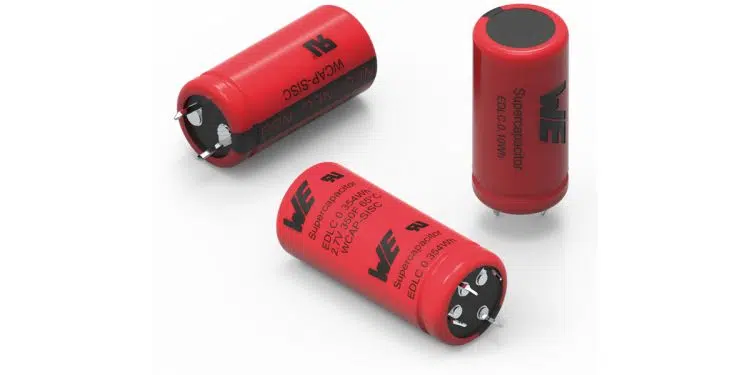Würth Elektronik introduces a new class of EDLC supercapacitors (Electrical Double Layer Capacitor) with snap-in terminals.
The WCAP-SISC EDLC snap-in supercapacitors are available with capacitance values of 100 F and 350 F – is the perfect solution for applications with high power and high energy requirements such as UPS or energy storage solutions.
They can be used in smart metering devices, network components or energy harvesting applications to name but a few. WCAP-SISC attains a rated current of up to 75 A.
The far higher energy density compared with conventional capacitors has made double-layer capacitors such as WCAP-SISC an environmentally friendly alternative to batteries. Compared to Li-ion batteries, the Supercapacitor with activated carbon technology offers numerous benefits: fast charging, very long service life with 500,000 cycles, and lower fire hazard. The capacitance tolerance is -10 / +30 percent, the rated voltage is 2.7 V. WCAP-SISC can be used at an operating temperature of -40°C to +65°C.
The 100 F and 350 F Supercapacitors are now available from stock without a minimum order quantity, and free samples can be ordered online or through a sales representative.
































